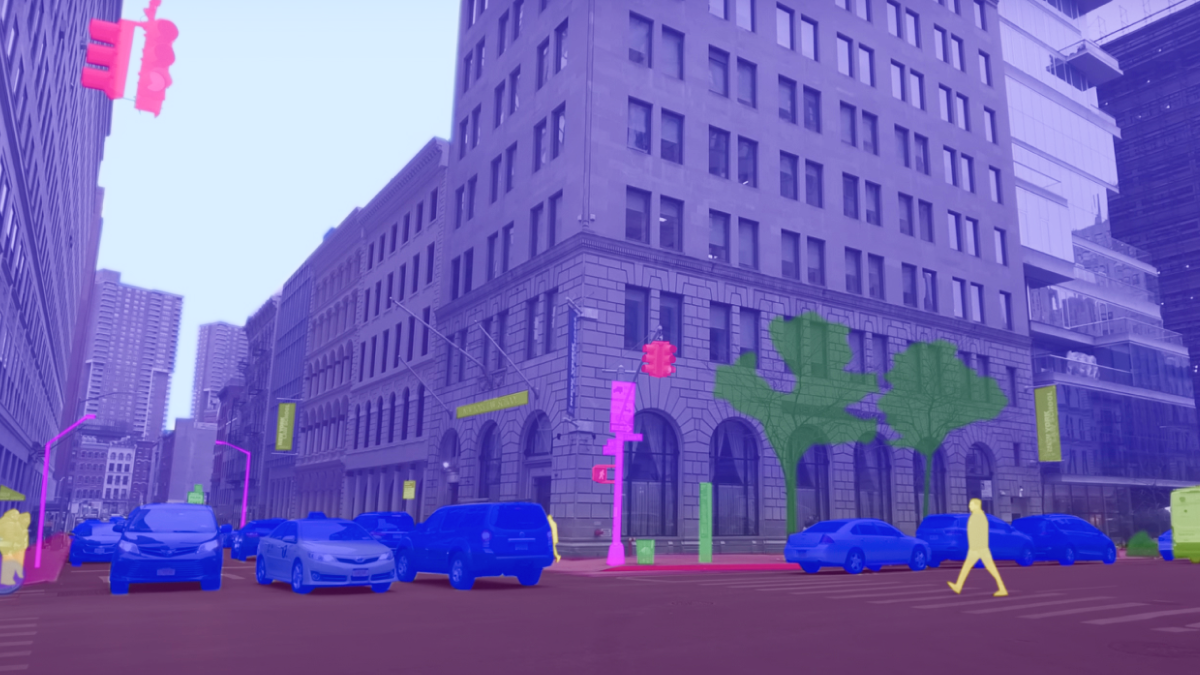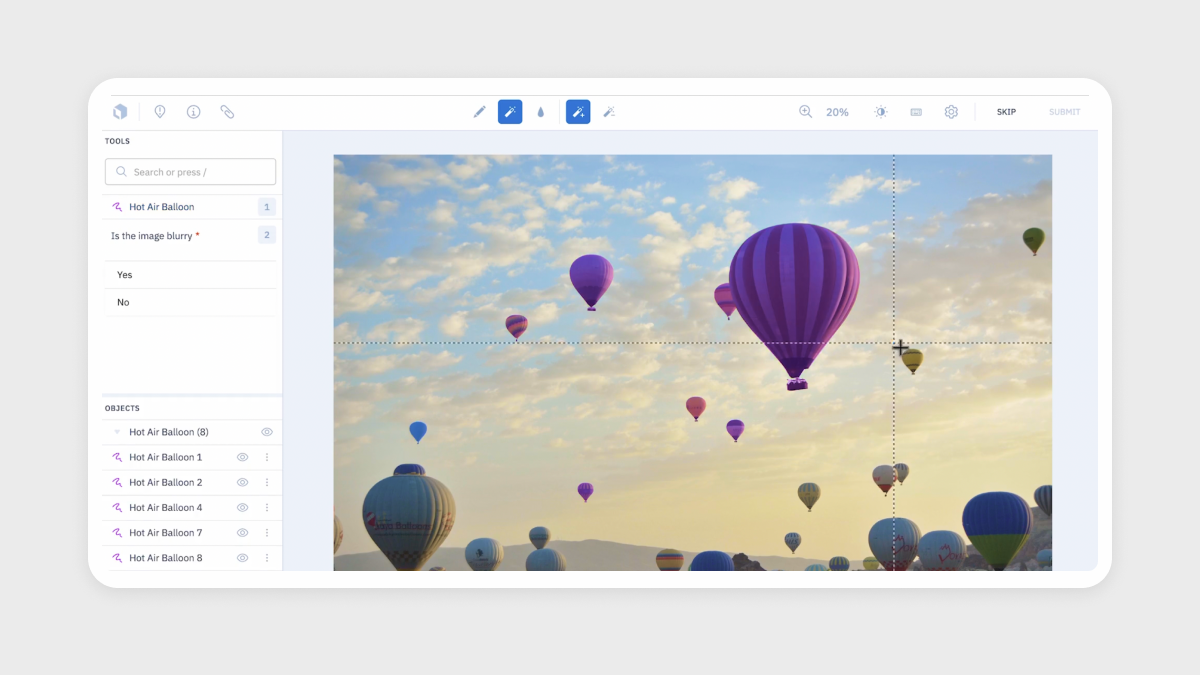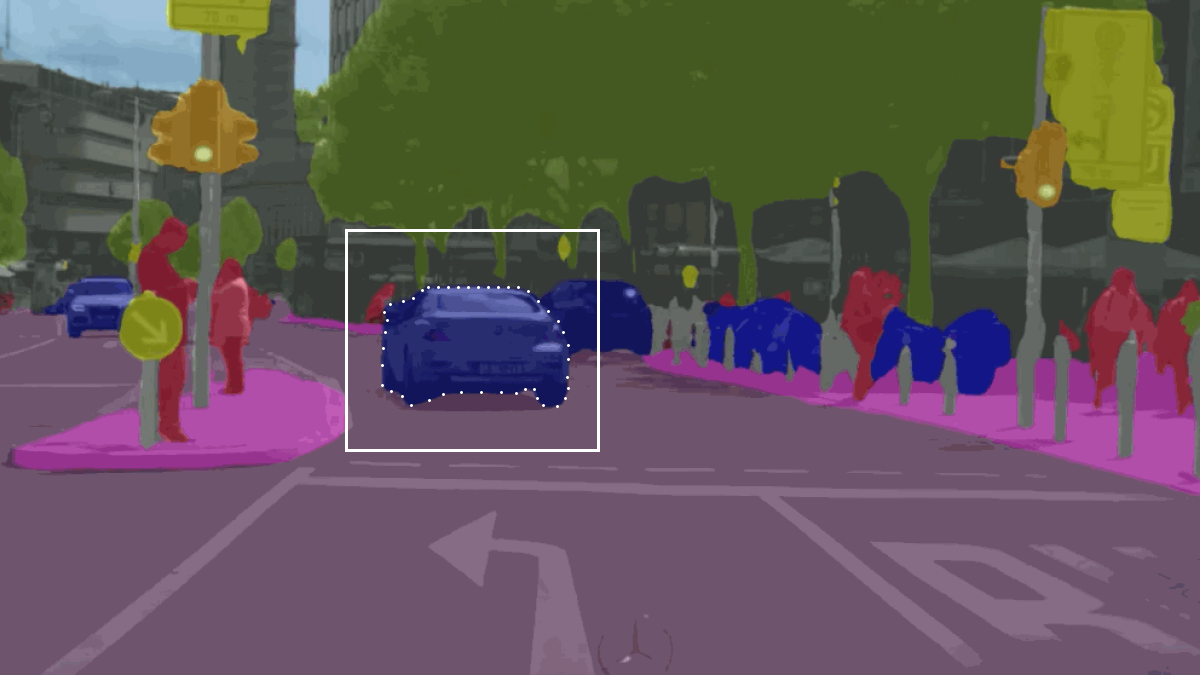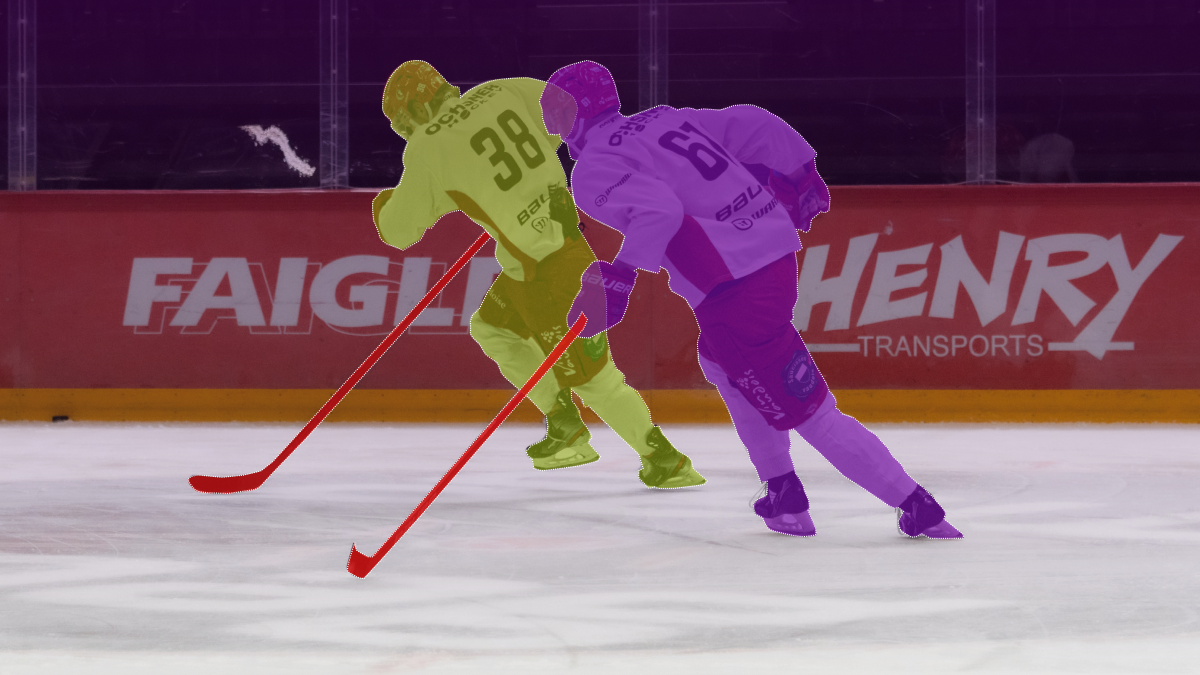AI-Assisted Data Labeling Approaches for Image Segmentation
Category: Best Practices
Published date: 29.01.2024
Read time: 8 min
Image segmentation is a crucial task in data annotation, particularly computer vision, enabling machines to identify and understand the distinct objects within an image. However, the accuracy of image segmentation models heavily relies on the quality of labeled data used for training. AI-assisted data labeling approaches have emerged as game changers in enhancing the efficiency and precision of image segmentation tasks. In this article, we will explore the significance of AI-assisted data labeling and various approaches that leverage artificial intelligence to streamline the image segmentation process.
The Importance of AI-Assisted Data Labeling

Accurate image labeling is a cornerstone in training effective image segmentation models. Manual labeling can be time-consuming and prone to errors, hindering the performance of machine learning algorithms. AI-assisted data labeling addresses these challenges by automating and improving the labeling process, allowing for faster and more accurate model training.
The majority of cutting-edge machine learning models heavily depend on the availability of huge quantities of data labeling for AI, which is a prerequisite for supervised tasks. Many use cases, such as computer vision, natural language processing, and speech recognition, require data labeling. In most cases, humans have been involved in this boring and time-consuming task of data labeling. To reduce the enormous amount of labor and time required for people to categorize data from start to finish, AI image labeling was developed. We explore this further in the next section.
Companies Providing AI-Assisted Data Labeling
There are lots of companies providing AI labeling services. These include:

- V7 Labs – This business solves computer vision challenges mostly by concentrating on visual data with a point-based methodology.
- Segments AI – This company was established to supply robotics and AV firms with data labeling software so they could improve the quality of their datasets. Segments AI’s offering for AI-assisted data labeling approaches is a superpixel-based approach.
- Mindy Support – Mindy Support provides data labeling for AI image labeling tools, as well as with an edge points-based approach.
- Hasty AI – With a focus on visual data, Hasty AI provides an image labeling tool to improve the efficiency of the labeling process. Hasty AI offers its users a method based on edge points.
- Supervisely – When it came to providing a platform for automated data labeling, Supervisely was the first on the market. They provide a platform for annotating photos, videos, and LiDAR files in addition to collaboration tools for effective workforce management.
- Labelbox – Labelbox is a platform for training data that offers tools for managing and categorizing different kinds of data. They provide only one method for AI-assisted data labeling, which is the box-based method.
Click-Based Approach

In the clicked-based approach, the human annotator receives the raw images and proceeds to identify the object by clicking on it. This is one of the simplest ways to apply AI-assisted data labeling. Generally speaking, segmentation AI is likely to be more accurate with more interactions a user gives. Conversely, the annotation time grows linearly with the number of clicks. The linear time increase also brings with it a number of other problems. These include:
- Determining when to stop clicking. This could be challenging because, with each click, the annotators are making this decision for every object.
- The annotators must obtain and analyze the updated prediction mask following each click before determining whether to click in a positive or negative manner and where to place the next point.
This can cause the annotation process to take longer overall because it takes longer to precisely choose an object and adds extra seconds.
Box-Based Approach

Predicting a mask inside the chosen box and using clever AI techniques to modify the edges to reduce touches on those edges is an additional option. However, since the AI algorithm frequently produces a worse mask rather than rectifying the remaining polygon points, such strategies naturally have much greater problems than the earlier ones. The University of Toronto and NVIDIA were the main developers and refiners of these methods. You may get more details about this here.
Edge Point-Based Approach

The next approach we will explore in interactive image segmentation is known as the Deep extreme Cut. The original technique, which predicts an object’s size from four extreme points on its edges, was created by the ETH Computer Vision group. Although this method appears to be a terrific option, the prediction of musk is not accurate enough. It can take a lot of time to add four more extreme points to the object’s edges. Apart from the 4-point criterion, the general method prevents the use of effective editing strategies in the event that the musk is not correctly predicted. A few businesses that provide annotation systems, including some that we mentioned earlier, such as Scale.ai and Hasty.ai, have implemented Deep Extreme Cut.
The Superpixel-Based Approach

Utilizing superpixel techniques to over-segment the image into multiple smaller segments and utilize them interactively to annotate the image is perhaps the most effective—method to date. For certain annotating tasks—especially those where the object’s edges are clearly visible—it resulted in several-fold acceleration. To minimize the number of clicks required to choose the object, one of the main drawbacks of this strategy is that it takes a lot of time for the annotators to become accustomed to adjusting the number of segments. This is comparable to the first method in that the annotators select the ideal number of segments for each object, which can occasionally be laborious for the annotation.
The Scribble-Based Approach

As we’ve already covered, employing an AI-assisted image classification labeling tool to fully annotate an image involves a trade-off between accuracy and processing time. Because of this, scientists are frequently interested in creating algorithms that require the fewest possible interactions to attain high accuracy. Nevertheless, they typically omit the specifics of how users interact with their system, and there isn’t always a straight correlation between the number of interactions and the annotation time.
The input of the Scribble-based technique consists of multiple distinct points that are extracted from scribbles made on the object. Next, we take the positive points and forecast the negative points as well, using Gaussian Processes. The machine learning model receives a mix of positive and negative scores, which it uses to automatically classify the object’s mask. With this method, the annotation process is becoming incredibly quick, easy to understand, and accurate—something that previous approaches were unable to accomplish.
Trust Mindy Support With All of Your Data Annotation Needs
Mindy Support is a global provider of data annotation services and is trusted by Fortune 500 and GAFAM companies. With more than ten years of experience under our belt and offices and representatives in Cyprus, Ukraine, Poland, Bulgaria, Philippines, India, and Egypt, Mindy Support’s team now stands strong with 2000+ professionals helping companies with their most advanced data annotation challenges.





